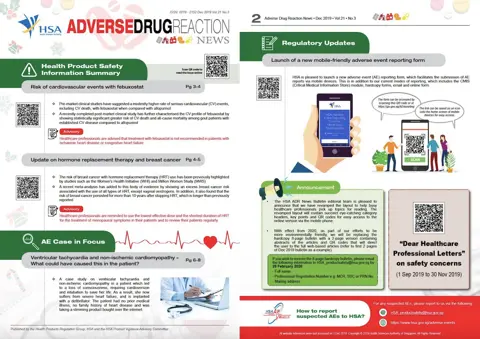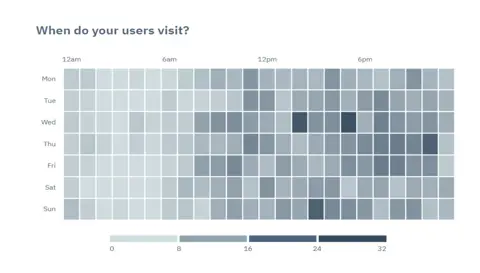
The Health Sciences Authority’s (HSA) Adverse Drug Reaction (ADR) News Bulletin is a key communication tool to inform healthcare professionals on HSA’s regulatory assessments of safety signals and their outcomes. It is also used to promote adverse event (AE) reporting by healthcare professionals. It has been in publication since 1998 with three issues yearly.
In 2019 and 2020 respectively, HSA conducted a stakeholder engagement session and a survey to identify the channels of communication preferred by healthcare professionals. The feedback from these activities suggested that healthcare professionals may have limited time to read HSA’s safety communication due to their busy schedules. Survey findings also revealed that e-mail was the preferred communication mode. Concurrently, there was a push for digitalisation throughout the public sector to improve the efficacy and accessibility of safety communication to healthcare professionals.
Armed with this feedback, HSA embarked on a transformational journey to communicate product safety information through HSA’s ADR News Bulletin more efficiently using technology. This involved a redesign of the bulletin format (piloted for the Dec 2019 issue), as well as the following:
1. Addition of a ‘Summary’ Section to the cover page: The summary section contains key takeaways on the various safety issues and advice published on the use of health products. As a result, healthcare professionals may more easily assess if an article is relevant to them before reading the full article.
2. Use of QR codes in the bulletin: Scanning of these QR codes takes the reader directly to the web-published article text. This allows easy, offline access via a mobile phone. The use of QR codes is particularly useful to healthcare professionals, including doctors, working in an environment with restricted access to the internet.
3. Reduction to a two-page mailer: Previously, the entire eight-page hardcopy bulletin was mailed to healthcare professionals. The hardcopy mailer has now been reduced to two pages containing summaries of the articles and their QR codes, except for those healthcare professionals who had expressed their preference for the eight-page hardcopy bulletin. Such a change is not only more environmentally friendly, but also generates cost-savings due to less printing and reduced use of paper.
4. Digital distribution of bulletin: The bulletin is now emailed to all registered healthcare professionals via the Ministry of Health (MOH) Alert System (an instantaneous notification system for emailing all registered healthcare professionals in Singapore). The use of this system ensures that every registered healthcare professional receives a digital copy within a day of distribution. HSA also added a subscription feature to our website whereby subscribers will receive automated email notifications when a new issue of the ADR News Bulletin is published on the website.

The outcome of our digitalisation efforts was evaluated using data analytics. HSA used the QR code scan data to analyse the behaviour of the readers and make refinements to further improve the communication of the ADR News Bulletin. The QR codes were generated from the go.gov.sg* where a data analytics tool is programmed on the website to track and analyse scan data from QR codes generated from this website. HSA evaluated the following metrics:
- Types of devices used by readers: Based on the scan data, HSA found that most of our readers (75.5%) use their mobile phones to access the digital copy of the bulletin, followed by computer desktops and tablets. This finding showed that the QR codes were being utilised and that they facilitated access to the bulletin be it on the go or at the desk.
- Distribution channels most used by readers: The analysis of the time trend of the QR scan data revealed that most readers access the ADR News Bulletin at two major time points: the initial email blast via the MOH Alert system, and when the hardcopy is mailed through the post. This latter finding showed that receipt of the hardcopy serves as a prompt to scan/click the QR codes and is therefore a reminder of the ADR News Bulletin in general. It also confirmed that our hybrid model of using both an email blast as well as hardcopy versions of the bulletin is effective in increasing online access to the bulletin.
- Analysis of daily web traffic to the digital bulletin: Analysis of web visits to the digital version of the HSA News Bulletin indicated that most readers accessed it during the second half of the day i.e., mid-afternoon onwards. From this data, HSA adjusted the timing of the email blast of the bulletin to the later part of the day (where feasible) to garner the highest readership. Below is a data analytics heat map report of the daily number of visits/clicks to the online digital bulletin over a week.
*Go.gov.sg is the official link shortener for the Singapore government. It serves as an anti-phishing tool and uses analytics to track click trends across all government links.

In conclusion, the evaluation of this project using data analytics showed that this transformational journey has been successful, and the project has met its objectives. The use of technology such as QR codes and the MOH Alert System, is a relatively inexpensive and simple way to improve the communication and distribution of safety information through the ADR News Bulletin. The adoption of a hybrid model of both a digital and hardcopy of the bulletin has also worked well in catering to different reader preferences as well as reducing costs through reduced printing of hard copies. Most importantly, this initiative has improved the communication of safety issues related to health products to healthcare professionals in Singapore.
The author would like to thank A/Prof Chan Cheng Leng, Editor-in-chief of the HSA ADR News Bulletin and colleagues in HSA's Vigilance and Compliance Branch for their support in the project.
Read more:




